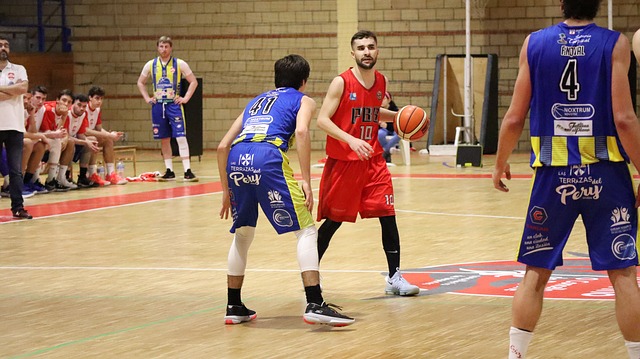During my time in school, balancing academics with training was always a challenge. However, one of the key things I focused on was maintaining my pulling strength. I discovered that strengthening my pulling muscles significantly benefited my grappling and clinching abilities, which are vital in MMA. Whether you’re in a grueling clinch exchange or working to secure a takedown, pull strength is crucial to maintain dominance and control.
When I completed my studies and returned to full-time MMA training, I immediately noticed how much stronger and more resistant I felt during grappling and wrestling rounds. My training partners even remarked on the noticeable difference. That’s when I realized how essential these exercises were, not just for short-term performance but for long-term gains.
Here are the 9 pull exercises I used regularly to maintain and build my pulling strength for MMA:
1. Skier Pulls
The skier machine has been a love-hate relationship for me. It pushes both my cardiovascular system and my pulling endurance to the limit. I typically perform this exercise using eight rounds of 30/20 intervals — going all out for 30 seconds, followed by a 20-second slow pace, then repeating.
The skier pull has dramatically improved my ability to maintain a strong pace during live grappling rounds. It simulates the constant pulling tension that’s common during scrambles and clinch battles in MMA.
2. TRX Rows
TRX rows are excellent for developing explosive pulling strength. I also incorporate an isometric hold at the top of each row, holding for 10 to 20 seconds to enhance static strength.
I found this exercise incredibly beneficial, especially for wall wrestling scenarios, where being able to explosively pull and maintain resistance is critical. Since adding TRX rows into my regimen, my resistance strength when fighting for position against the cage has significantly improved.
3. Chin-Ups
Chin-ups have been a staple for improving my Muay Thai clinch grip. The clinch relies on controlling your opponent’s head to create openings for knees and other strikes. By building pulling and grip strength through chin-ups, I’ve found it easier to secure and maintain a solid clinch position.
Over time, my clinch has become tighter and harder to escape, giving me a major advantage during sparring sessions.
4. Barbell Rows
When grappling or wrestling, the latissimus dorsi muscles play a crucial role in pulling motions. Barbell rows are perfect for targeting the lats and developing the pulling power needed for takedowns and scrambles.
Consistent barbell rows have helped me engage my back muscles more effectively when fighting for underhooks or attempting to finish a takedown.
5. Romanian Deadlifts
For building a strong lower back and hamstrings, Romanian Deadlifts have been essential. I typically focus on low-rep, heavy sets (5 reps) to maximize strength gains.
A strong lower back contributes directly to maintaining proper posture during wrestling exchanges. Good posture is critical for executing successful takedowns and defending against opponents trying to break you down.
6. Isometric Bicep Curls
Instead of regular bicep curls, I opt for isometric holds. I typically hold a barbell for around 30 seconds, focusing on creating constant tension.
This method has transferred well to body lock scenarios and underhook battles. The enhanced grip and bicep endurance have allowed me to maintain dominant positions for longer without fatiguing quickly, making it harder for training partners to escape.
7. Medicine Ball Hold Cable Chops
This hybrid movement was introduced to me by my coach and has been a game-changer for developing rotational core strength. By holding a medicine ball and cable simultaneously, I rotate my torso to mimic real-life wrestling motions, like turning an opponent during underhooks.
This move trains the obliques and core muscles required to shift your opponent off balance, which is key when looking to secure takedowns or reversals.
8. Medicine Ball Good Mornings
Medicine ball good mornings offer similar benefits to Romanian Deadlifts but with a different movement pattern. I hold the ball from underneath, lower my torso forward while maintaining a straight back, then explode back to standing.
This exercise strengthens the lower back and glutes, which directly helps when fighting off takedowns or holding strong underhooks during wrestling sequences.
9. Sled Pulls
Sled pulls are one of my go-to exercises for developing explosive leg and pulling strength simultaneously. By driving with my legs while pulling the sled, I recreate the demands of a wrestling clinch, where both upper and lower body strength are engaged.
It’s also a great combination of strength and cardio, which directly applies to grappling scenarios that require endurance and power.
In mixed martial arts (MMA) training, it is common to incorporate pulling exercises such as ski pulls, TRX rows, and pull-ups to improve wrestling and grappling skills. However, the importance of mental motivation to an athlete’s success cannot be ignored.
Custom coins are an ideal tool to motivate individual achievement and enhance team cohesion. Customizing your coins with your favorite images and logos can increase pride and help to improve your fighting skills. For example, after completing each tough training, you can customize a unique custom coin to meet your mental needs, affirm yourself, and motivate yourself to keep improving. In addition, these coins can also cultivate your positive mentality, maintain an advantage on the field, and increase your chances of winning. Now, why not get your unique custom coins at customcoins.ca to enhance training and motivation and achieve your goals faster?
Conclusion
Once you step into the grappling world of MMA, you’ll quickly realize how much pulling strength influences success. Whether you’re fighting for underhooks, defending takedowns, or working the clinch against the cage, pulling muscles are constantly engaged.
Integrating a dedicated pull day into your weekly program can make a significant difference. Everyone you train with will vary in strength and resistance, so building your pulling capacity will give you a noticeable edge. If some of these exercises are new to you, try incorporating them into your routine and see how they elevate your grappling and wrestling game.











